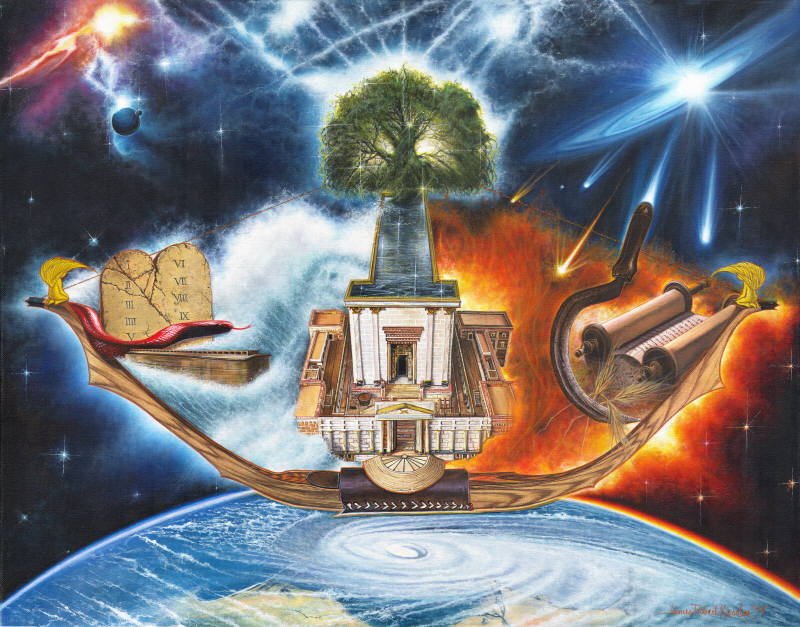| The Mark of the Beast
by Robert Cruikshank Jr.
"The beast imagery, that John sees in his vision and communicates to his readers, has deep roots in, both the Hebrew Bible and Second Temple literature..."
"This means that Nero and/or Rome was merely that latest manifestation of this beastly power. And when John spoke of one beast rising out of the Abyss or sea (Rev. 11:7, 13:1, 17:8), and another coming up from the land (Rev. 13:11), his original audience would have recognized the imagery immediately..."
"The word translated “monster” in this verse [Jer. 51:34] is tannin, the same word used with reference to Pharaoh in Ezekiel 29:3. It means “dragon, serpent or sea monster.” It was originally used of “the great sea creatures” of Genesis 1:21, created on the fifth day. “In their ferocity and strength to devour,” writes Richard W. Engle, “they became a symbol for great kings and empires who punished Israel or whom Israel should avoid.”
In other words, the characterization of Nero/Rome as “the beast” is meant to recall past endurance, on the part of God’s people, against this monstrous enemy. John’s purpose is to encourage his readers to persevere in their present situation. If the chaos monster, now embodied in Nero, was absent in history past, John would have no point of reference with his readers in regard to this imagery..."
"It is precisely because he does have that common point of reference that John is able to magnificently weave together themes and images, from ages long ago, in order to encourage perseverance and steadfastness in his readers’ current situation...."
"The beast of Revelation was the same beast that it always was: the sea dragon, Leviathan –manifesting itself in whomever, or whatever, is persecuting and opposing God’s People. In Revelation, he appears one last time before being thrown into the Lake of Fire."
Click here to read the entire article:
Part 1
Part 2
Part 3
[Editor's Note: We offer this excellent article to the reader as a demonstration. This material shows how the detail and subject at the center of Revelation is not new, but follows the entire covenant story of Scripture. In fact, this example shows the detail is rooted in Genesis 1, sparking some profound questions:
- What is the SUBJECT of Genesis 1?
- Wouldn't this understanding help illuminate the original meaning and context of Genesis 1?
- Is Day 5 of Genesis 1 describing some material creation of oceans on planet earth or something else entirely?
- Doesn't this confirm a covenant creation in Genesis 1 related to the purpose of nations in the Old Covenant order as they relate to Israel?
It should also be noted that these creatures that God "bara" [created] on Day 5 in Genesis 1 are given the same blessing in 1:22 as the blessing given to man in 1:28. This covenant blessing given to the sea creatures (and birds of the air) is almost universally ignored or slighted in Genesis creation material.
How is this to be understood?
Could it be that this covenant blessing on the fish of the sea and birds of the air identifies them as the gentile world, within God's covenant creation, which God always intended to redeem through the Messiah of Israel? It appears the same covenant blessing given to fish/birds (1:22) and to man (1:28) portrays God's covenant love for both gentiles and Israel in the Old Covenant creation -- Heaven, Earth, and Sea.
Genesis 1 is thus confirmed not as an account of material origins of the material universe, but rather as a legal/covenant creation in line with a temple dedication text of the ancient Near East.]
No More Sea [As a Proof for Covenant Creation]
The Logic of Biblical Creationism and the Future
See also:
Leviathan and Behemoth: Giant Chaos Monsters in the Bible
By Brian Godawa

|






